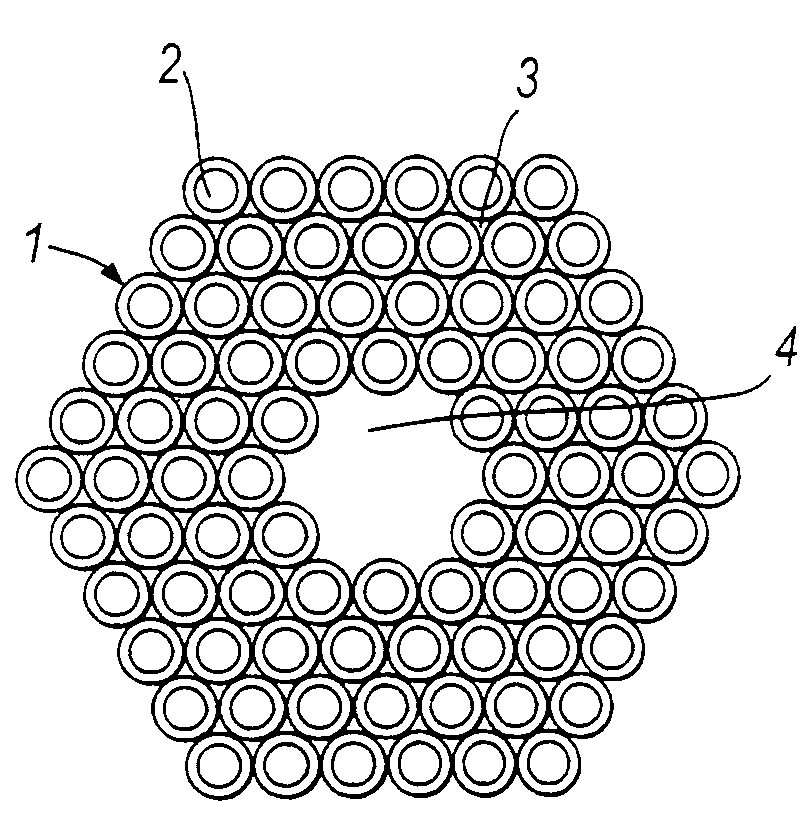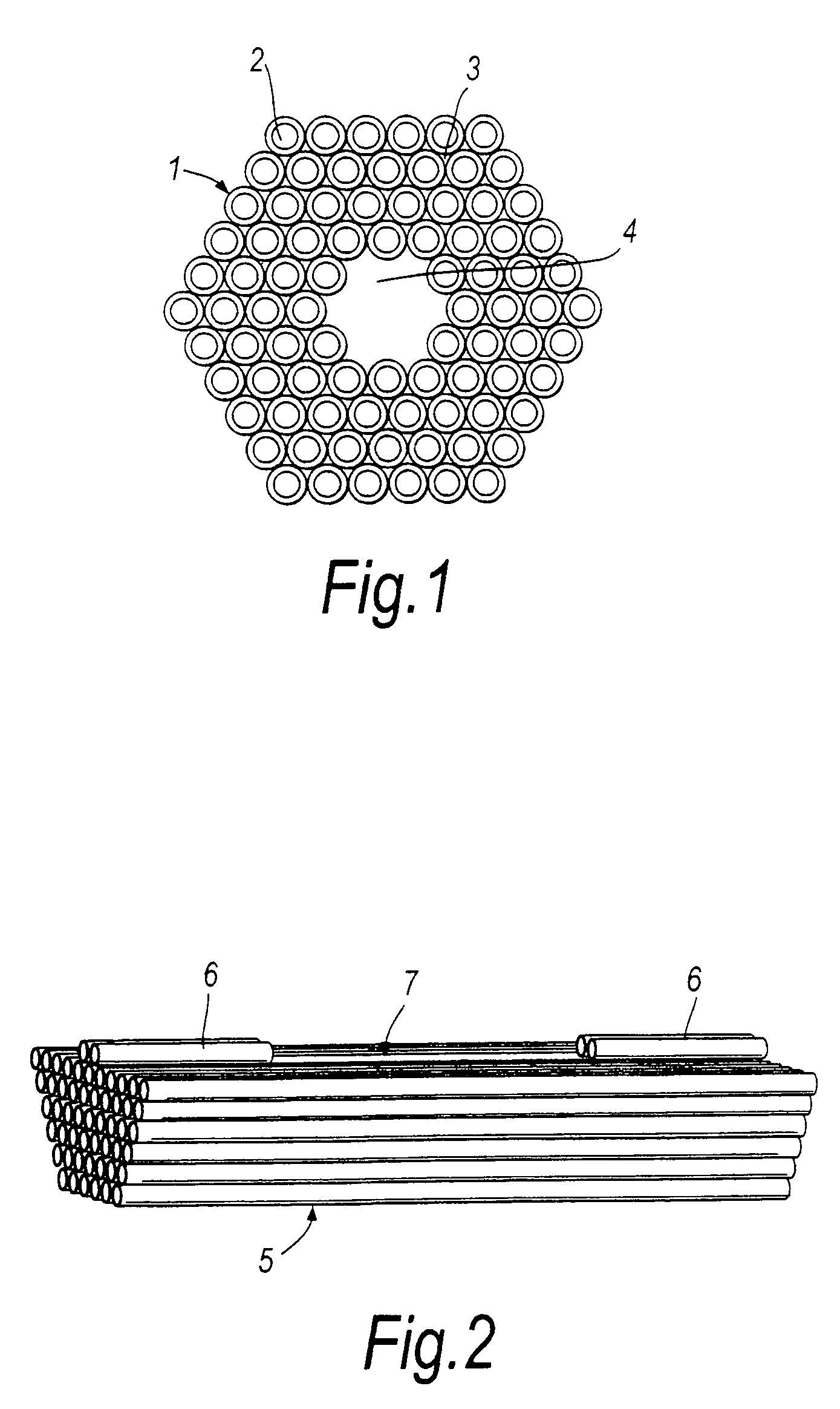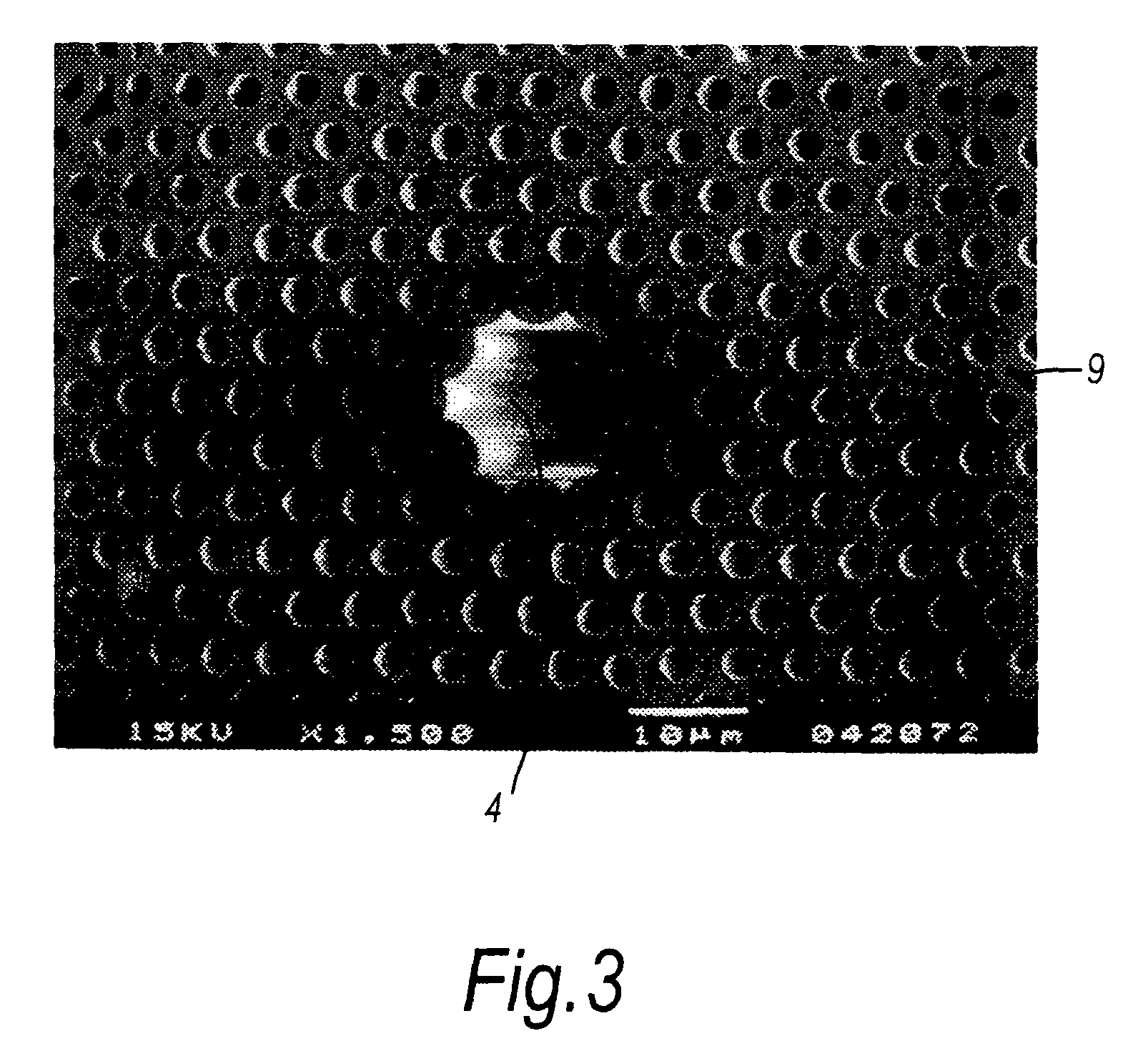Photonic crystal fibre and a method for its production
a technology production methods, applied in the field of photonic crystal fibres, can solve the problems that the goal has not been achieved, however, until now, and achieve the effect of low loss
- Summary
- Abstract
- Description
- Claims
- Application Information
AI Technical Summary
Benefits of technology
Problems solved by technology
Method used
Image
Examples
Embodiment Construction
[0052]Light can be guided in an “air-mode” in a hole in a fibre waveguide such as that shown in FIG. 1. The fibre comprises a cladding formed by a triangular array of fused, elongate tubes 1, which have been drawn from silica capillaries and contain longitudinal air holes 2. The capillaries are of circular cross-section resulting in interstitial holes 3 between the tubes 1. The fibre also comprises a core in the form of a large air hole 4 at its centre. The air hole 4 is formed in this example, as described below, by omitting a bundle of seven capillaries from part of the fibre's preform and is therefore the size of seven unit cells of the cladding material; the hole 4 is therefore much larger than the holes 2 in the fused tubes 1 and also very much larger than the interstitial holes 3. Fibres formed by omitting just a single cane were observed not to guide modes in the air hole.
[0053]It is useful to consider why it is that photonic crystal fibres with similar cladding parameters bu...
PUM
| Property | Measurement | Unit |
|---|---|---|
| diameter | aaaaa | aaaaa |
| length | aaaaa | aaaaa |
| internal diameter | aaaaa | aaaaa |
Abstract
Description
Claims
Application Information
 Login to View More
Login to View More - R&D
- Intellectual Property
- Life Sciences
- Materials
- Tech Scout
- Unparalleled Data Quality
- Higher Quality Content
- 60% Fewer Hallucinations
Browse by: Latest US Patents, China's latest patents, Technical Efficacy Thesaurus, Application Domain, Technology Topic, Popular Technical Reports.
© 2025 PatSnap. All rights reserved.Legal|Privacy policy|Modern Slavery Act Transparency Statement|Sitemap|About US| Contact US: help@patsnap.com



